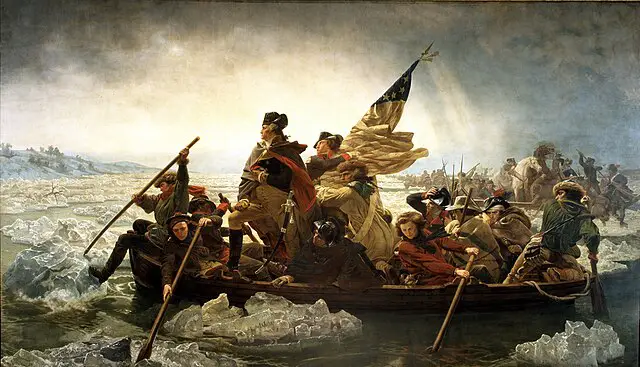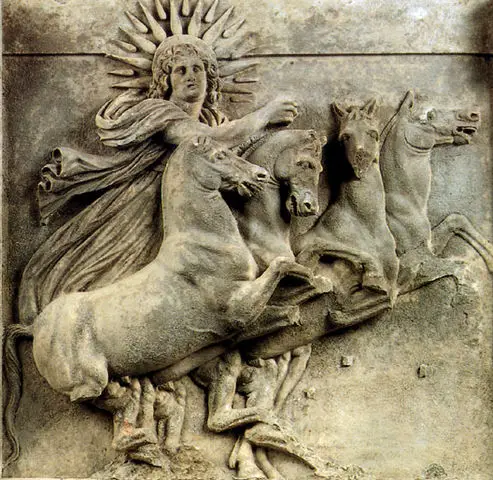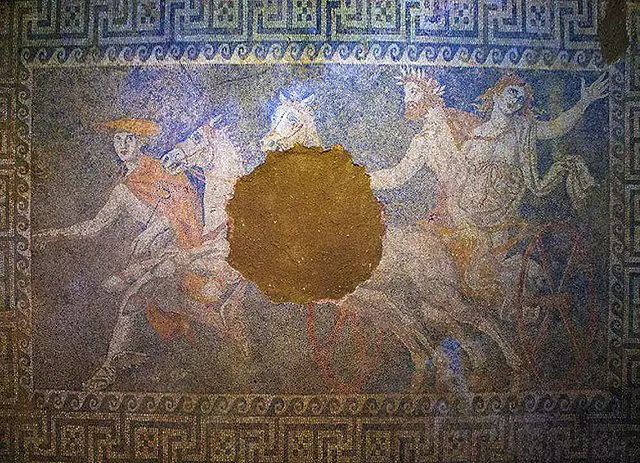| Further Reading | The 5 Roman Emperors Of The Julio-Claudian Dynasty |
During the reign of the Roman Emperor Tiberius (14-37 AD) one of the wonders of ancient Roman World was constructed. Many people are not aware of Tiberius’s massive hidden imperial palace on the Island of Capri named the Villa Jovis. It was from this massive palace that Tiberius would administer the early Roman Empire.
There are 3 amazing facts about Emperor Tiberius’s Villa Jovis. First, the palace itself was massive at a height of 131 ft. and covering 1.7 acres. Second, since the Villa Jovis was on top of a mountain Roman engineers built a series of cisterns to collect rain water. Third, the imperial palace also had a watchtower that would send signals to the mainland by using either smoke or fire.
Here at The History Ace I strive to publish the best history articles on the internet. If at the end you enjoyed this article then consider subscribing to the free newsletter and sharing around the internet.
Without further ado, here are 3 facts about the Villa Jovis, the imperial palace of Tiberius.
The Palace Itself Was Massive At A Height Of 131 ft. And Covered 1.7 Acres.
One of the 3 facts about the Villa Jovis was that at its peak it was a massive complex.
The entire palace was placed on top of the far northeastern side of the Island of Capri. The Villa Jovis sits on top of a cliff overlooking a 4 mile channel between Capri and the mainland of Italy.
The south side of the palace had a gentle slope that led to the ancient town of Capri. On the north side of the palace however there was a 600 ft. tall vertical cliff that went into the blue Mediterranean sea.
On top of this precipice an imperial palace was built. Building started under the reign of Augustus but was finished under Tiberius. This complex would be around 8 stories tall and spread over the entire flat section of the cliff which was around 1.7 acres in size.
The Villa Jovis was split up into 4 different quarters. The south wing of the palace complex was designed for Tiberius to deal with administration of the Empire. The east wing of the palace would have been used for large gatherings and receptions. The west wing held a giant open air hall designed to give amazing views of the Bay of Capri. The north side of the palace was reserved for the Imperial living quarters.
This imperial palace was massive. To an onlooker it would have been both an imposing fortress and a beautiful structure.
As such one of the 3 facts about the Villa Jovis is that it was 131 ft. tall and covered around 1.7 acres. It was simply massive.
Since The Villa Jovis Sat On Top Of A Mountain A Series Of Four Massive Cisterns To Collect Rain Water Were Built
Another fact about the Villa Jovis is that recent archeological digs have unearthed a series of 4 massive cisterns which provided water for the entire palace.
For nearly 1,000 years the Villa Jovis was covered by rubble and dirt. For the longest time people believed that all that remained of the once massive palace was a chapel and the ruins of a lighthouse.
This was because during the medieval era Corsair raids in the Island of Capri were thought to have fully dismantled or destroyed the palace. This was not the case however.
In the early 20th century an archeologist named Amedeo Maiuri discovered that there were several 3 layers of palace which were built around 4 massive cisterns. This was a massive discovery. Over a period of around 50 years the Villa Jovis would be carefully excavated to the modern villa today which can still be toured when you visit Capri.
These cisterns would collect rainwater. It is estimated that the Villa Jovis held a complex plumbing system which allowed it to collect rain water from across the imperial palace.
Cisterns were a common feature of large Roman complexes around Italy. They allowed large buildings with their servants to be constructed away from sources of water.
As such one of the 3 facts about the Villa Jovis is that it was built around 4 massive cisterns which provided all the water to the palace.
The Imperial Palace Also Had A Watchtower That Would Send Signals To The Italian Mainland Through Fire Or Smoke
One of the 3 facts about the Villa Jovis was that it had a watchtower that could send signals through either smoke or fire to the Italian mainland 4 miles away.
The Romans had used signal fires to transport messages for nearly 4 centuries before the reign of Tiberius. The Romans learned of the use of signal fires from the Greek strategist Aeneas Tacticus.
Over the course of the late Roman Republic and early Empire signal watchtowers would be built around Italy to alert the Romans to a variety of oncoming threats.
Emperor Tiberius would have a signal watchtower created at his imperial palace. This palace could send and receive various messages through the use of different signal fires. Also it is theorized that Rome could send signal fires to Tiberius back in his Villa Jovis.
This would have given Emperor Tiberius a means to ‘govern’ the empire while away from the city of Rome. As such he would have never had to leave his Villa Jovis.
Therefore the 3rd fact about the Villa Jovis is that it had a watchtower created to send and receive signals for the Emperor.
Conclusion
There you have it; an entire article dedicated to the 3 facts about the imperial palace of Tiberius the Villa Jovis.
Here at The History Ace I strive to publish the best history articles on the internet. If you liked this article then consider subscribing to the free newsletter and sharing around the internet.
Further, you can check out some of the other articles below.
-
How The American Revolution Changed The World

Here is how the American Revolution changed the world. Many people are not aware of just how important this event actually was.
-
Why The Roman People Loved Chariot Racing

Why did the Roman people love chariot racing? Well it all comes down to these 3 reasons.
-
The Design and Color of Roman Chariots

What was the design and color of Roman Chariots? Were they faster or slower then normal chariots? Well here is everything!
Sincerely,
Nick